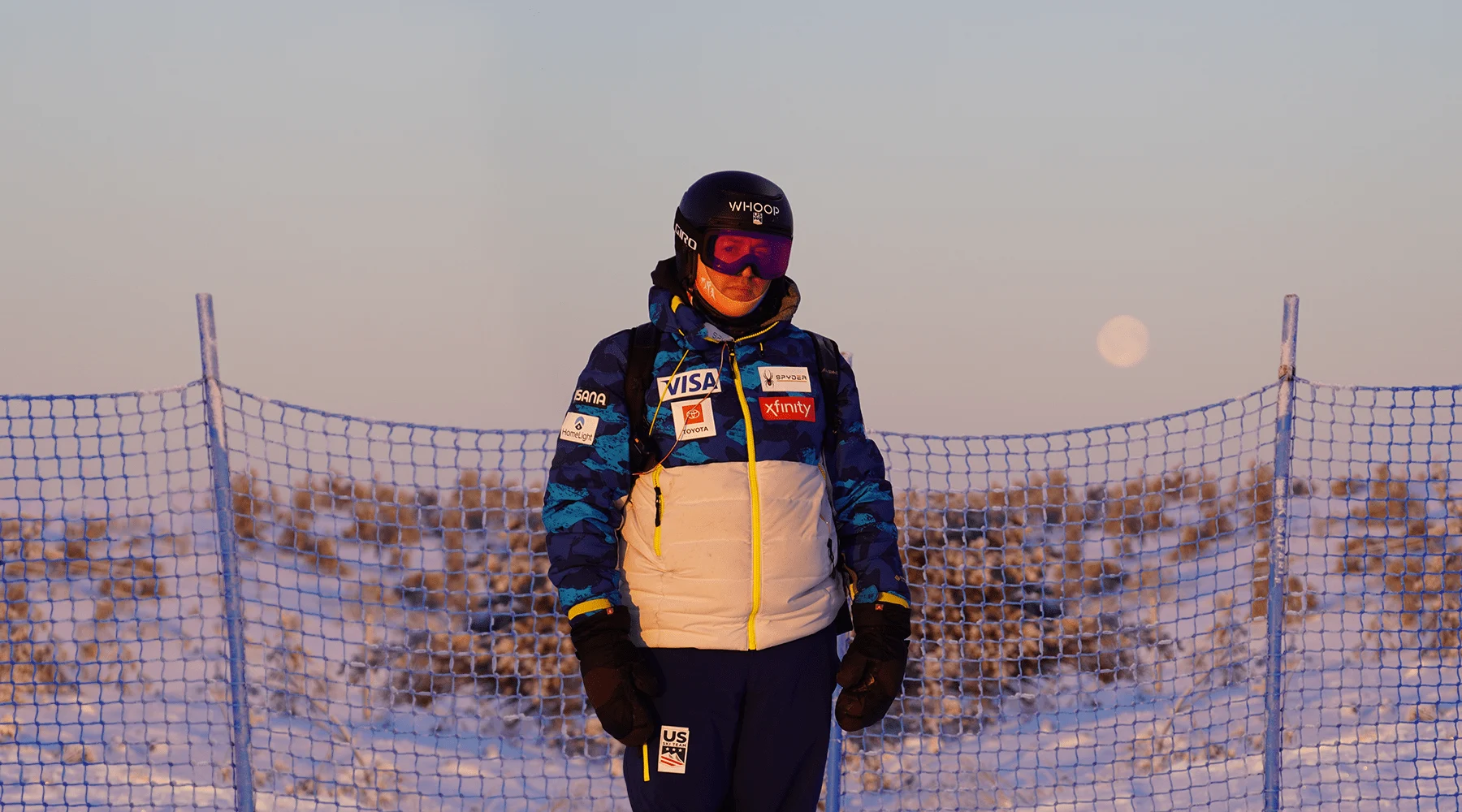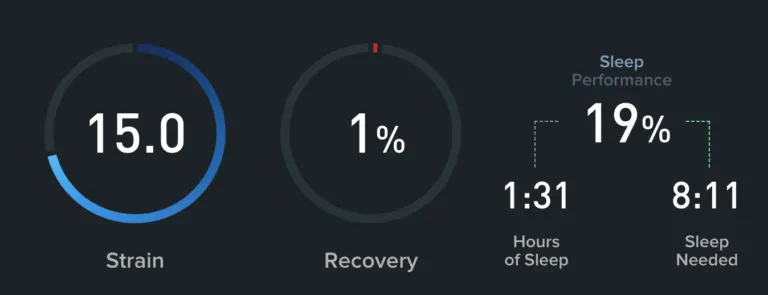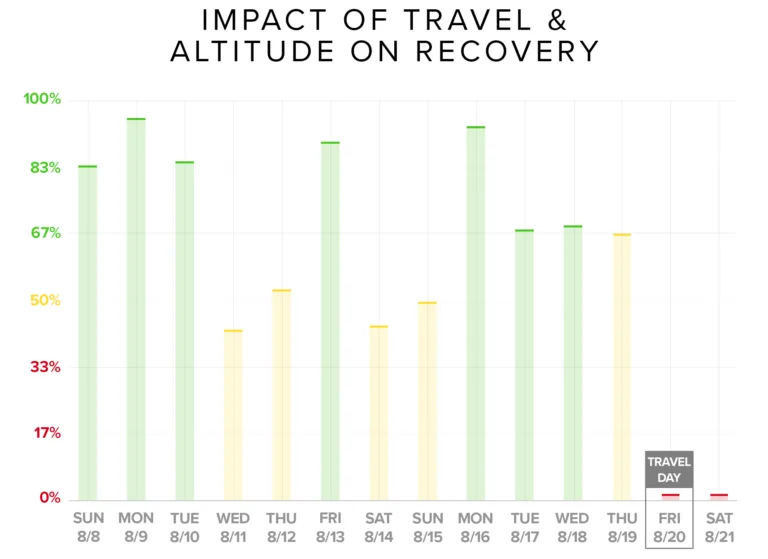Topics
- Article
- Member Stories
US Ski Coach Mike Day on How Travel and Altitude Impact WHOOP Data, Training & Performance

United States Ski coach Mike Day shares data insights from traveling across time zones and training at high altitude.
Hello WHOOP Community! Since I spoke with you last, I have been training in Switzerland, Austria and Colorado and have had races in Austria, Finland, the USA, and Canada. We have been busy finishing our final preparations for this competition season, which is now fully underway and includes a LARGE event in China in February. I’d like to discuss a couple of topics, traveling through significant changes in time zones and adjusting to high-altitude living. And more specifically, the data and information my WHOOP provides in those areas and how that helps me.
Effects of Travel and Time Zone Changes
We travel more than 100,000 miles by air each year, training and competing in both the northern and southern hemispheres and on 4 different continents. It is a busy and hectic schedule that leads to significant changes in time zones. Unfortunately, we rarely have the luxury of rest days after travel and usually have to get right to work. Quite simply, it is brutal on both the body and mind. I personally do not sleep well on planes and it doesn't bode well for our team either. When you combine the lack of sleep volume and quality with a dramatic shift in time zones, the result is often super fatigued staff and athletes.

Mike's WHOOP stats Following an overnight flight across several time zones.
We are constantly working on strategies to reduce this travel fatigue, but clearly will never eliminate it. How does my WHOOP data help with this? It provides very clear, immediate, and real information on how these strategies are working and how we should proceed with our plans moving forward. This allows me to make adjustments and have a realistic sense for what I am capable of and how I will feel on these days. I regularly monitor my sleep, recovery, and heart rate variability stats. For example, look at what happened to me last August when I traveled across 6 time zones to Switzerland. My HRV dropped from 36 to 21, my resting heart rate jumped from 53 to 64, and my WHOOP recovery (which had been consistently green and yellow) fell all the way to 1%.

Mike's daily recoveries prior to and after traveling to Switzerland.
High Altitude and Heart Rate Variability
For the sport of alpine ski racing we are generally training and racing at higher altitudes. This is where you need to go to find snow, especially with climate change and global warming. I live in Stowe, Vermont at an elevation of just 889 feet above sea level. This makes the transition to serious altitude extremely difficult. These challenges for me parallel the same ones I face with changes in time zones, and I regularly look at and use the same data. For example, I’m often traveling from the Eastern Standard to Mountain Time Zone. It’s only a 2-hour time change, but it increases my living altitude by 7,250 feet and my sleep quality goes in the tank. After flying to Vail last November, I observed the following changes in my data:
- HRV: All week it had been in the mid 30s, dropped to 13
- RHR: Went from consistently in the 55-57 range up to 75
- Recovery: The next day it was just 12%
Multiple nights at high altitude also caused my respiratory rate to climb from 13.4 to 15.1 breaths per minute. Following these changes, I've found it can take me 5-7 days to get my sleep and recovery numbers back to normal. I am not an expert in these subjects, but I wanted to share my experiences with you. The impact of travel and altitude changes on human physiology and ability to perform is a topic frequently talked about in our sport. My WHOOP data not only validates these discussions, but also what I am feeling, and in turn enables me to do my job better. LEARN MORE: US Ski Coach Mike Day Talks Preparation & Training with WHOOP